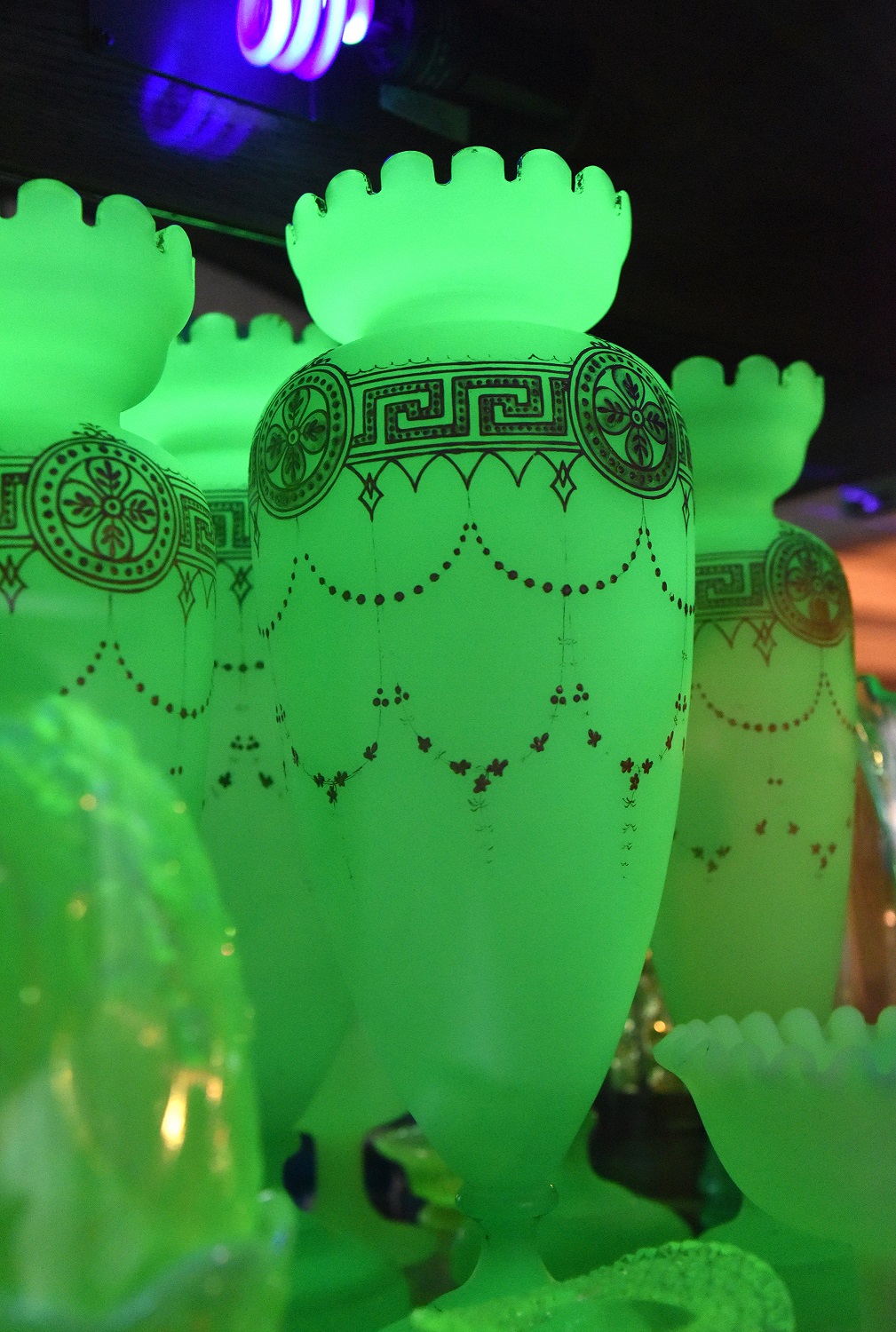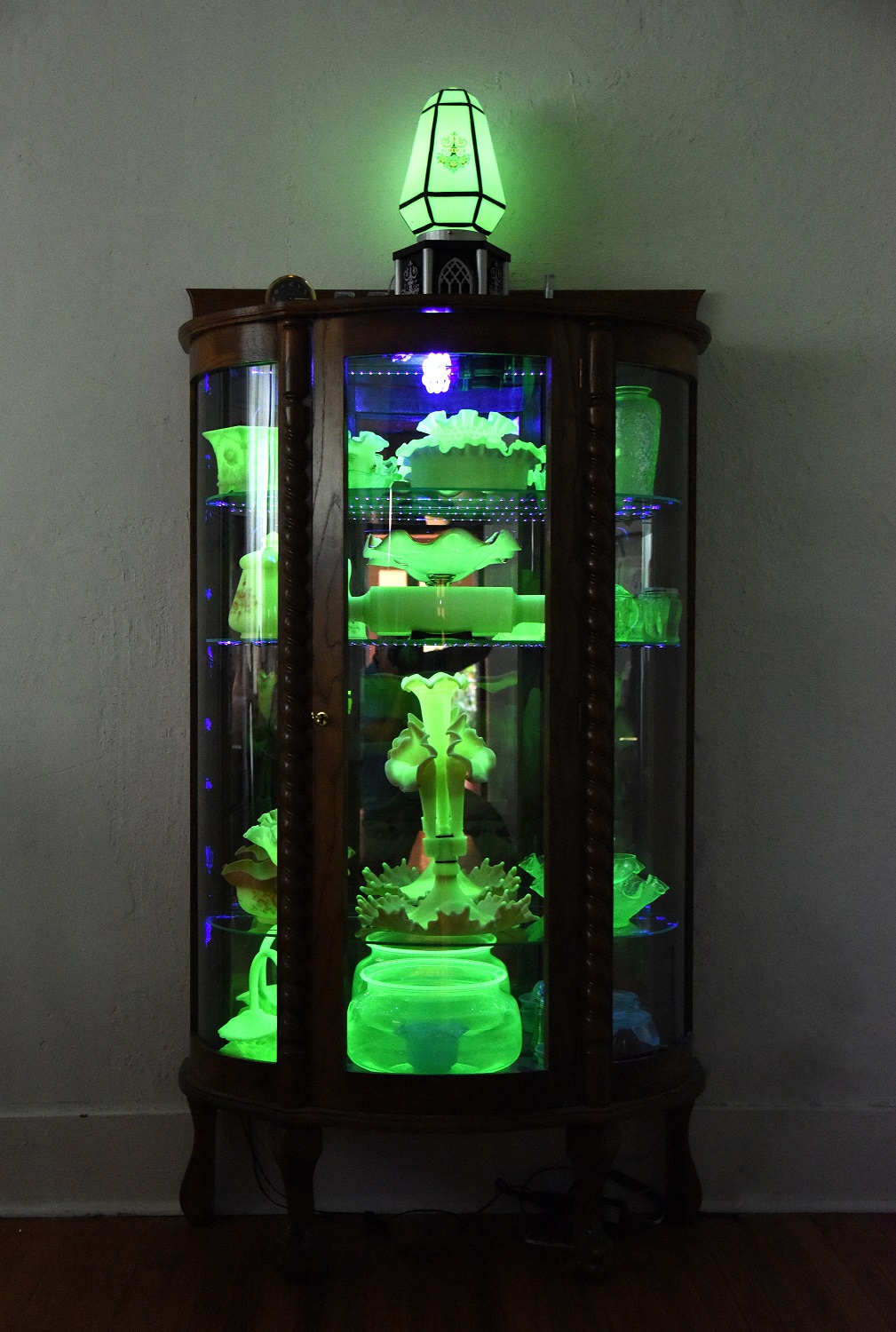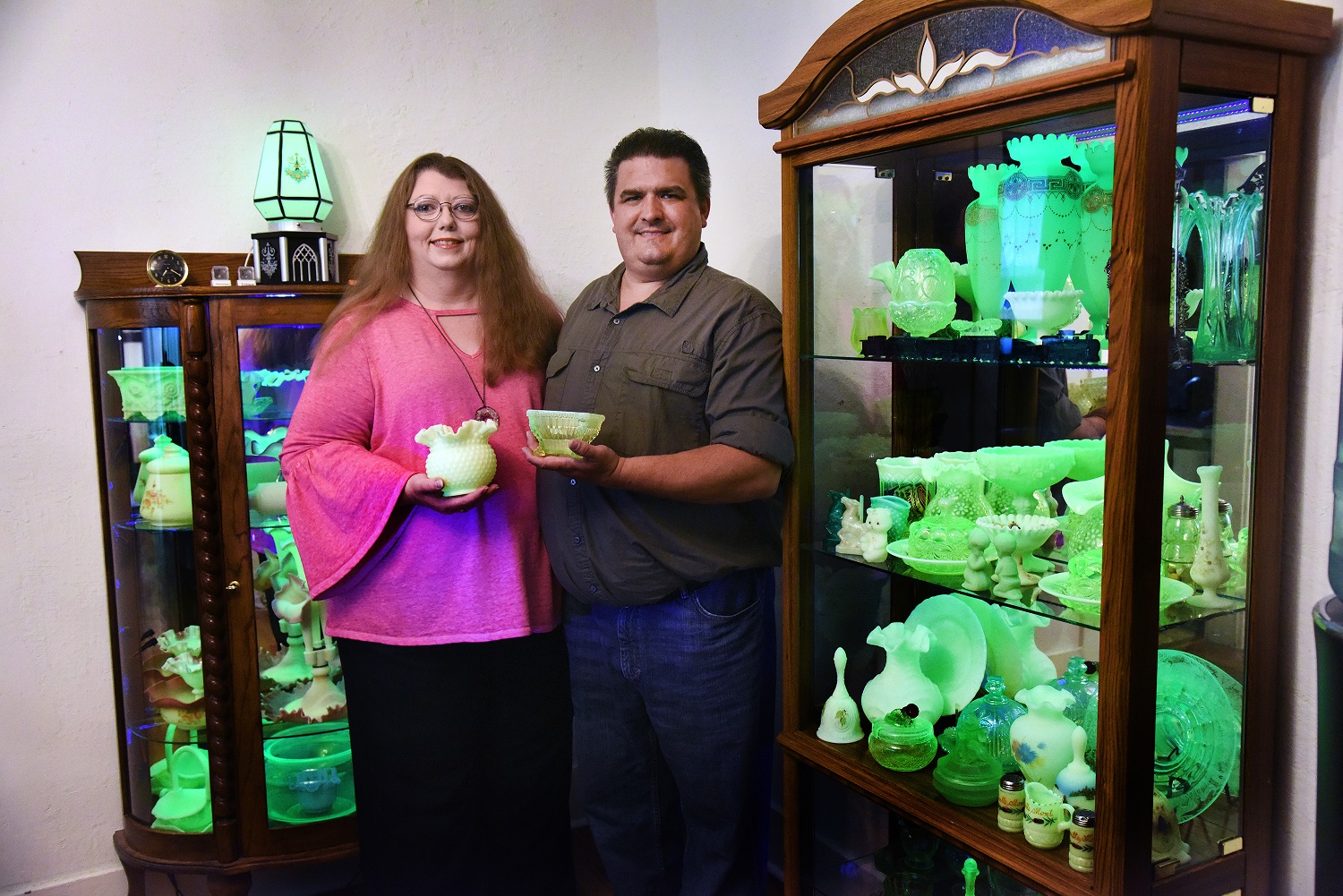Most people who enter antique stores wander aimlessly, looking for anything that might catch their eye. But for Haylee and Ryan Saunders, they scour the shelves and cases with a singular focus for an elusive treasure: uranium glass.
When Ryan began working at Idaho National Laboratory, he had an idea to try and collect as many elements of the periodic table as possible. He is passionate about the radioactive elements because of his work at INL. After conducting research on the elements he could possibly collect and how to get them, he learned about uranium glass and quickly developed an obsession for it.

Ryan has worked as a calibration technician at INL’s Standards and Calibration lab for more than 11 years. His work supports INL’s mission by providing traceable and accurate measurement data for researchers. The equipment used to take recordable measurements at the laboratory must be calibrated to make sure that the data is correct and usable. This ensures a high-level of confidence in the integrity of the data that researchers collect.
Haylee also works for INL as a contract specialist. Her work ensures that the proper contracts and agreements are in place between INL and universities, so that they can collaborate on research.
In their spare time, the Saunders family looks for uranium glass. It can be tricky to know whether it is truly made with uranium. Sometimes the glass has a green tint, but the best way to tell if it really contains uranium is to shine a black light on it. The uranium oxide in the glass will cause it to fluoresce bright green under black light, regardless of what color the glass is under normal light.
“While many people know about uranium in the context of nuclear energy, not many know about the beauty it can bring to glass,” Ryan said.
The history of uranium glass goes back all the way to 79 A.D., but it wasn’t popularized until the 1820s when the pressed glass technique was invented. The newly discovered method of fabrication allowed for mass production and lower cost, which meant more people could afford to own it. Later, it was discovered that the uranium could be combined with various materials to produce different colors in the glass. For instance, when uranium is mixed with gold, it creates a beautiful pink color within the glass, which was a popular method used by Fenton, a glass manufacturer renowned for their ornate glass creations.

In the U.S., production of uranium glass stopped when the government confiscated all uranium supplies for the Manhattan Project during World War II. After the war, a few companies resumed production, but on a much smaller scale. Today, most producers have ceased production of uranium glass because of tighter government restrictions regarding uranium dioxide. Small glass makers continue to produce some pieces, but they are rare.
Despite the difficulties in acquiring the glass pieces, the Saunders’ love for uranium continues to blossom. Haylee kick-started Ryan’s collection buying him his first three pieces as a Christmas gift in 2016. “This is where my love for uranium started,” he said. Since then, he has built his collection, collecting almost three cabinets full, with over 100 pieces of glass in all colors, shapes and sizes. The family continues searching for more. “We enjoy travelling with our children. The kids will bring their black lights into the antique stores with us to find more glass,” Ryan said. They each have a little keychain black light and love finding new things to add to the collection.

While building the collection, the family tries to find unique shapes and colors of the glass. Uranium glass comes in many different colors and styles usually ranging from yellows to blues and green. Ryan has been surprised on a few occasions when his wife or kids find an item that he has passed up because he thought it didn’t look to be the right color. This is why he always has a black light on hand to double check for that glow.
With all the possible colors and shapes, the couple hopes to continue building their collection. When asked what his favorite element is, Ryan said, “It was a clear winner, my favorite element is uranium because of the beauty that can be found in it.”
Hobbies are fulfilling, and fulfilled people make more productive employees. Hobbies unearth hidden skills, alleviate stress, unite you with others, and improve quality of life — all things that will help you function better at work. See other stories about Idaho National Lab employees.







